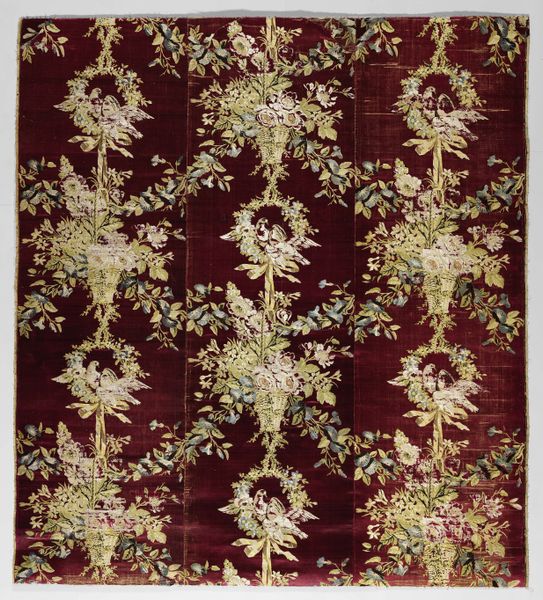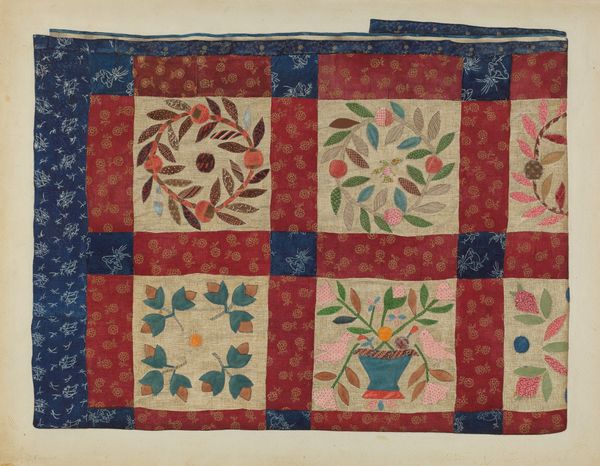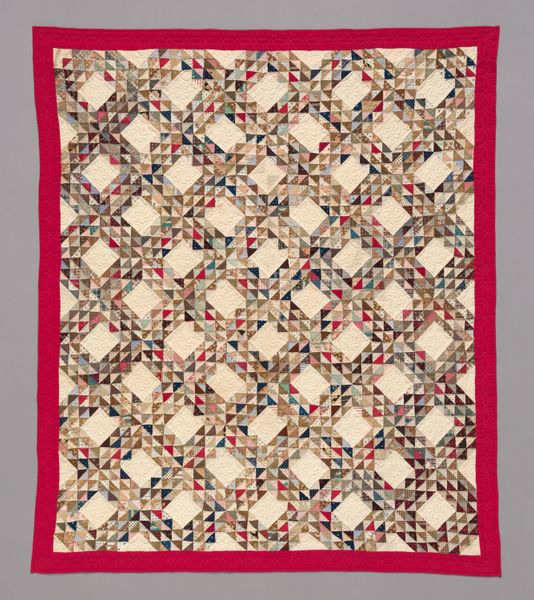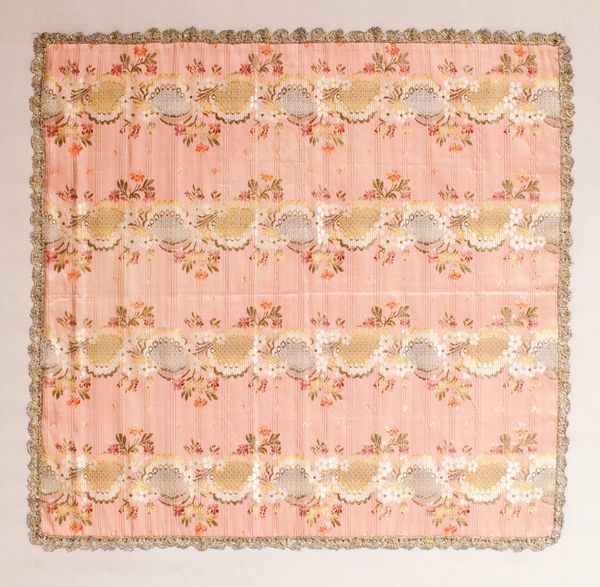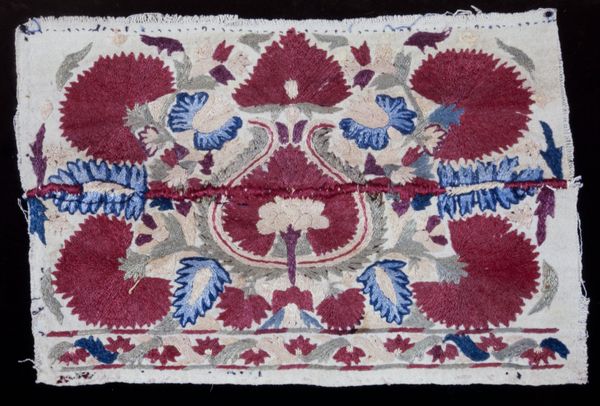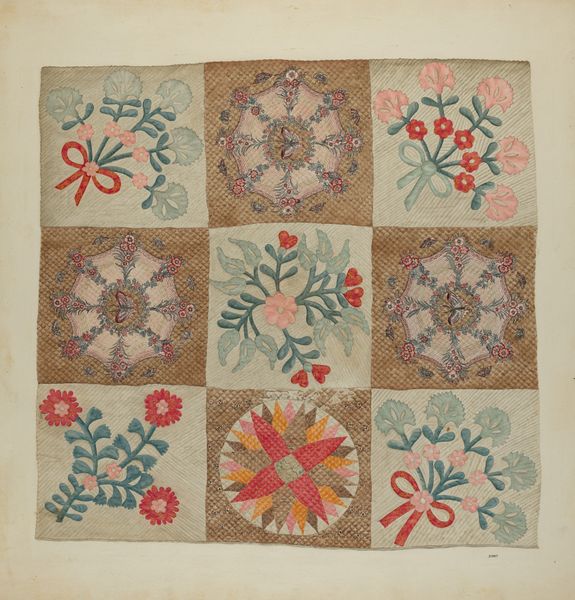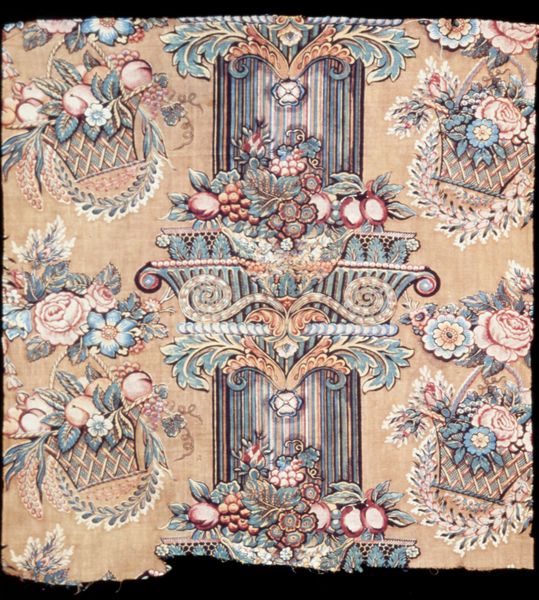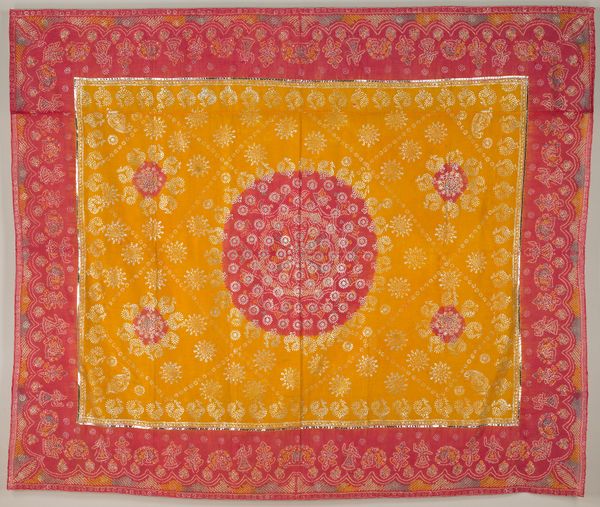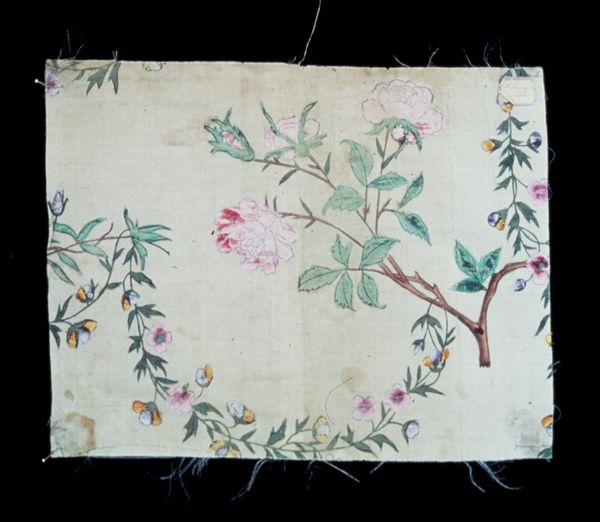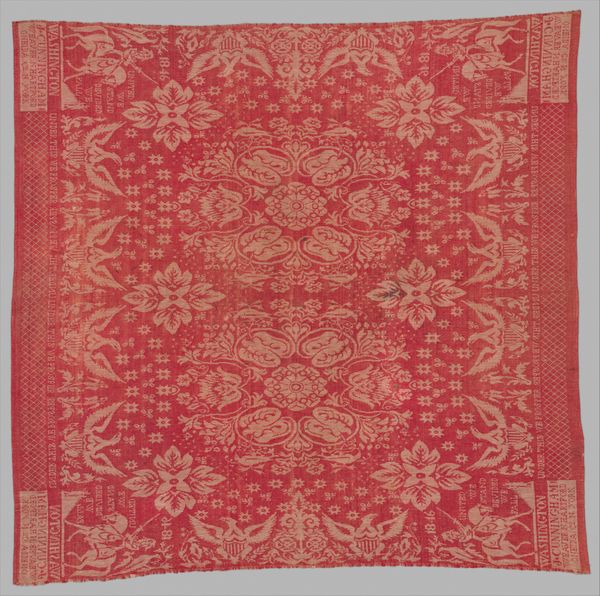
Copyright: Horia Bernea,Fair Use
Editor: This is Horia Bernea’s "Praporele florilor," painted in 1976 using acrylic on textile. The immediate effect is one of dizzying, almost kaleidoscopic symmetry. What’s your take? Curator: What I find compelling is the work's simultaneous embrace and subversion of traditional folk patterns. Bernea made this work during a period of intense political repression in Romania. So how do we interpret this "floral cloth" amidst a state-controlled aesthetic? The gesture toward textile, something so intrinsically linked to the domestic sphere and women's work, reads to me as a subtle act of resistance. What do you notice about the composition itself? Editor: Well, it's interesting you mention resistance, because initially, it feels so decorative, almost soothing. But the longer I look, the more that central pattern seems to radiate outwards, almost aggressively. Curator: Exactly! The organic, repetitive motifs typical of Romanian folk art are here charged with an almost unsettling energy. Consider the context: Bernea's art questioned prescribed socialist realism and aimed at exploring more subjective and personal truths, engaging themes such as identity and memory. Do you think the symmetry offers order, or does it amplify a sense of unease, reflecting the sociopolitical landscape of the time? Editor: I’m leaning towards unease now. It’s like something familiar, folk patterns, has been subtly weaponized. I never would have considered it a form of resistance at first glance! Curator: And that’s the power of art, isn't it? To hide complex messages within seemingly simple forms, challenging us to look deeper into both the artwork and its context. Editor: Absolutely. This has completely changed how I view decorative art, and I think I can appreciate "Praporele florilor" a lot more now. Thank you.
Comments
No comments
Be the first to comment and join the conversation on the ultimate creative platform.

